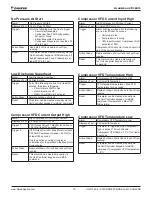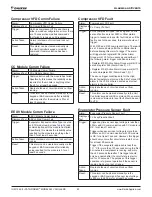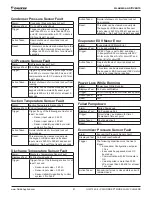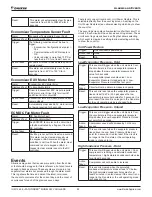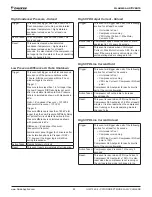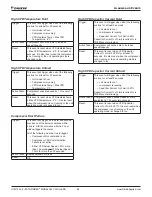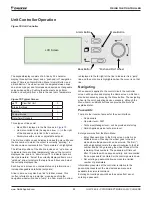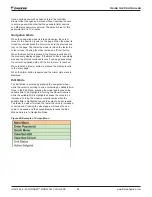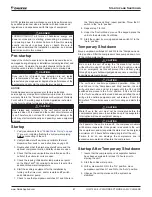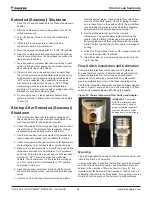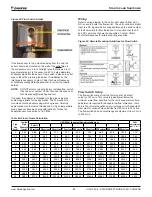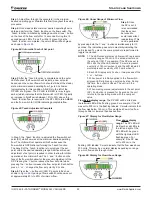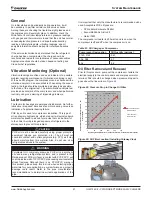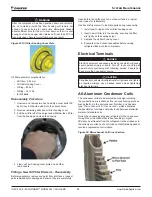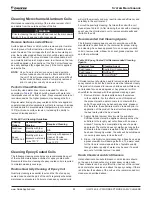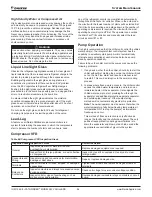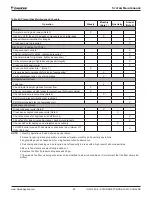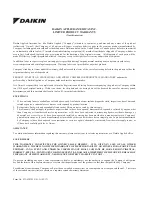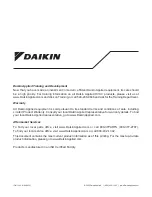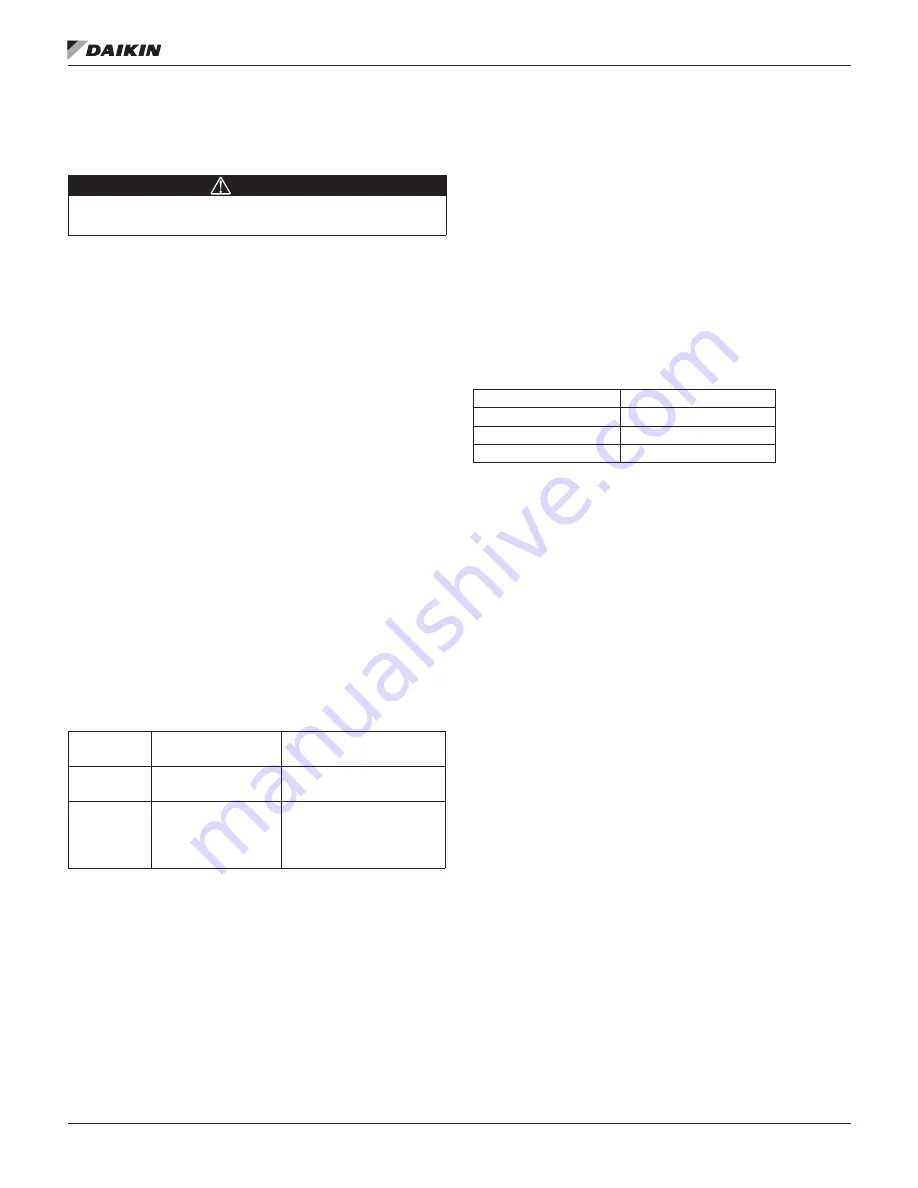
System Maintenance
www.DaikinApplied.com 93
IOM 1242-8 • PATHFINDER
®
MODEL AWV CHILLERS
Cleaning Microchannel Aluminum Coils
Maintenance consists primarily of the routine removal of dirt
and debris from the outside surface of the fins.
WARNING
Prior to cleaning the unit, turn off and lock out the main power
switch to the unit and open all access panels.
Remove Surface Loaded Fibers
Surface loaded fibers or dirt should be removed prior to water
rinse to prevent further restriction of airflow. If unable to back
wash the side of the coil opposite that of the coils entering air
side, then surface loaded fibers or dirt should be removed with
a vacuum cleaner. If a vacuum cleaner is not available, a soft
non-metallic bristle brush may be used. In either case, the tool
should be applied in the direction of the fins. Coil surfaces can
be easily damaged (fin edges bent over) if the tool is applied
across the fins.
NOTE:
Use of a water stream, such as a hose, against a
surface loaded coil will drive the fibers and dirt into
the coil. This will make cleaning efforts more difficult.
Surface loaded fibers must be completely removed
prior to using low velocity clean water rinse.
Periodic Clean Water Rinse
A monthly clean water rinse is recommended for all coils
according to
. Coils should be rinsed with water at a
lower pressure such as from a hose. Pressure washers are not
recommended as the higher pressure may damage the fins.
Regular water rinsing of epoxy coated coils that are applied in
coastal or industrial environments will help to remove chlorides,
dirt and debris. An elevated water temperature (not to exceed
130ºF) will reduce surface tension, increasing the ability to
remove chlorides and dirt.
Table 62: Coil Cleaning Guidelines
Coating
Option
Recommended
Rinsing
Required Cleaning
Aluminum
Coil Only
Monthly with low
pressure water only N/A
Epoxy
Coated Coil
Monthly with low
pressure water only
- max 130°F
Quarterly with approved
cleaner, Choride
Remover is required -
max 130°F
Cleaning Epoxy Coated Coils
The following cleaning procedures are recommended as part
of the routine maintenance activities for epoxy coated coils.
Documented routine cleaning of epoxy coated coils is required
to maintain warranty coverage.
Routine Quarterly Cleaning of Epoxy Coil
Quarterly cleaning is essential to extend the life of an epoxy
coated coil and shall be part of the unit’s regularly scheduled
maintenance procedures. Failure to clean epoxy coated coils
will void the warranty and may result in reduced efficiency and
durability in the environment.
For routine quarterly cleaning, first clean the coil with a coil
). After cleaning the coils with a cleaning
agent, use the chloride remover to remove soluble salts and
revitalize the unit.
Recommended Coil Cleaning Agents
The following cleaning agents, used in accordance with the
manufacturer’s directions on the container for proper mixing
and cleaning, have been approved for use on epoxy coated
coils to remove mold, mildew, dust, soot, greasy residue, lint
and other particulate:
Table 63: Epoxy Coated Coil Recommended Cleaning
Agents
Chemical Type
Cleaning Agent
Coil Cleaner
Enviro-Coil Concentrate
Coil Cleaner
GulfCoat™
Chloride Remover
CHLOR*RID
®
Chloride remover should be used to remove soluble salts from
epoxy coated coils, but the directions must be followed closely.
This product is intended to remove chlorides and sulfates and
not intended for use as a degreaser. Any grease or oil film
should first be removed with the approved cleaning agent.
1. Remove Barrier - Soluble salts adhere themselves
to the substrate. For the effective use of this product,
the product must be able to come in contact with the
salts. These salts may be beneath any soils, grease or
dirt; therefore, these barriers must be removed prior to
application of this product. As in all surface preparation,
the best work yields the best results.
2. Apply chloride remover directly onto the substrate.
Sufficient product must be applied uniformly across the
substrate to thoroughly wet out surface with no areas
missed. This may be accomplished by use of a pump-
up sprayer. The method does not matter, as long as the
entire area to be cleaned is wetted. After the substrate
has been thoroughly wetted, the salts will be soluble and
is now only necessary to rinse them off.
3. Rinse - It is highly recommended that a hose be used as
a pressure washer will damage the fins. The water used
for the rinse is recommended to be of potable quality,
though a lesser quality of water may be used if a small
amount of chloride remover is added.
Harsh Chemical and Acid Cleaners
Harsh chemicals, household bleach or acid cleaners should
not be used to clean outdoor or indoor epoxy coated coils.
These cleaners can be very difficult to rinse out of the coil and
can accelerate corrosion and attack the epoxy coating. If there
is dirt below the surface of the coil, use the recommended coil
cleaners as described above.

